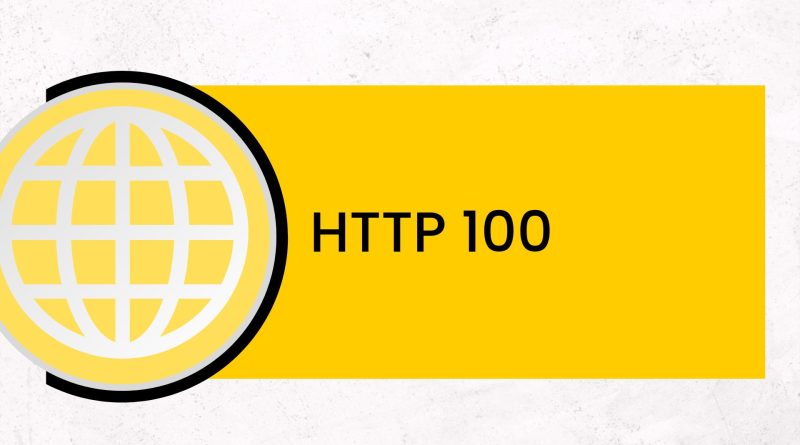HTTP 100: The Hidden Status Code You Need to Know
Have you ever heard of HTTP 100? It is a unique type of response code that can be returned by web servers to clients when certain conditions are met. In essence, it’s an indication from the server that more information needs to be provided in order for the http request to complete successfully. But what exactly does this mean and why should developers care about it?
This article will provide an in-depth overview of the http status’ capabilities and explain how developers can use it to better serve their customers. We’ll discuss its benefits, limitations and potential applications for various types of websites – including e-commerce stores, blogs, and corporate sites. Finally, we’ll explore some best practices for using HTTP 100 correctly on your site.
HTTP 100 is a powerful tool for improving website performance, but if not used properly it could have unintended consequences ranging from degraded user experience to potentially serious security risks. Read on to find out how you can harness the power of HTTP 100 while avoiding any negative impacts!
1. What is HTTP 100 status code
HTTP Status Code 100 is an informational status code of Hypertext Transfer Protocol that informs the client that the initial part of the request has been received and that the client should continue with the rest of the request. This status code is often seen when a client is sending a request using any request method such as POST request, but the server needs more information in order to process and provide the requested resource. The server will then use this status code to inform the client it should continue sending the rest of the request.
The most common use of HTTP Status Code 100 is in the context of a “100 Continue” message. This message is sent by a server to a client when it expects the client to send more information in order to complete the request. The server will then wait for the client to send the additional information. After the client sends the additional information, the server will respond with a different status code, such as “200 OK” to indicate that the request was successful.
2. Causes Of HTTP 100 Status Code
An http 100 status code is a response from the web server to a client’s request. It indicates that the initial part of the request has been received and understood, but no further action can be taken until additional information is provided by the client. So what causes this particular status code? There are several possible reasons.
One potential cause of an http 100 status code could be due to an incomplete set of request headers accompanying the original request sent by the client. If there’s something missing in the header, then it will affect how quickly or accurately the origin server responds with other data. In addition, if too much data is included in the header, it might lead to delays or errors when processing requests.
In some cases, servers may return an http 100 status code in response to certain types of requests that they do not support or cannot process correctly. This usually happens when clients attempt to make use of features that their chosen web browsers have not enabled yet. Clearly, understanding what triggers these responses is key for developers who want to ensure their applications remain functional and responsive at all times.
3. Identifying HTTP 100 Responses
Identifying HTTP 100 responses is an essential part of comprehending the reasons for them. To identify a client or server error, it is necessary to be conversant with the assorted types of response codes associated with the status code. This can assist in pinpointing and dealing with any issues.
A response code that indicates an HTTP 100 status is 101 Switching Protocols, occurring when a user agent (browser) requests an alteration from one version or type to another, e.g. from HTTP/1.1 to HTTP/2.0. 102 Processing is one such response code, signifying acceptance of the request but the inability to process it due to queuing. 103 Early Hints may be present, denoting that additional resources may become available when certain conditions are met.
Knowing how to identify these response codes allows us to more effectively diagnose what might be causing the issue at hand and work towards resolving it quickly and efficiently. With careful analysis and troubleshooting, we should be able to find out what went wrong and take steps toward rectifying it before any further damage is done.
4. Troubleshooting HTTP 100 Issues
When troubleshooting HTTP 100 issues, it’s important to understand the context of the response. Oftentimes, this response is telling us that a server has received and understood our request but needs further information before proceeding with processing. So firstly, we need to ensure that all relevant details are being sent along in the request itself.
To start, check for typos or incorrect formatting in your requests. Make sure you’re sending valid data and headers too; if any of these elements are missing or invalid then the server cannot process them correctly. Additionally, look into timeouts and rate limits; sometimes servers can become overwhelmed if they receive too many requests at once or within a certain amount of time. If either of these applies to your situation then consider adjusting your request frequency accordingly.
Finally, take a closer look at how you’re handling errors from the server responses – make sure error messages are handled appropriately so that unexpected scenarios don’t lead to more problems down the line. With all these steps taken care of, you should be on track to solve any HTTP 100 issues quickly and effectively!
5. Best Practices For Avoiding Http 100 Responses
When it comes to avoiding HTTP 100 responses, there are some rules to bear in mind. To start with, make sure that all customer demands have the essential headers, like accept, cache-control, and content-length. Plus, make sure to use only applicable and current caching principles for the application’s sources. At long last, ensure that all server answers have valid HTTP status codes to avoid puzzling the customers regarding their demands.
Troubleshooting an issue like this can be a time-consuming process due to its complex nature; however, taking the right steps can save valuable development hours down the line. That’s why it’s important to understand how these headers work together when making requests or responding to them. It may also be beneficial to check if any of your existing code could potentially be causing issues related to http 100 errors.
By following these best practices and being aware of common causes of http 100 errors, you can help prevent such problems from occurring in the future. Being proactive instead of reactive goes a long way toward maintaining reliable performance on web applications and services.
Conclusion
HTTP 100 status codes are an important part of the communication between web servers and clients. They let the client know that a request has been received and is being processed by the server, allowing for smoother operations. By understanding the causes of HTTP 100 responses, identifying them when they occur, troubleshooting issues related to them, and implementing best practices to avoid them, website owners can ensure their websites remain reliable and efficient.
In conclusion, HTTP 100 status codes are essential in providing information about requests between clients and servers. Website owners should understand how these codes work so they can identify any potential problems quickly and take appropriate steps to resolve them before visitors experience poor performance or errors on their site. Understanding why these codes appear, where they come from, what they mean, and how to prevent future occurrences will help keep your website running smoothly.
All HTTP status codes by categories
Informational responses
(100 – 199)



